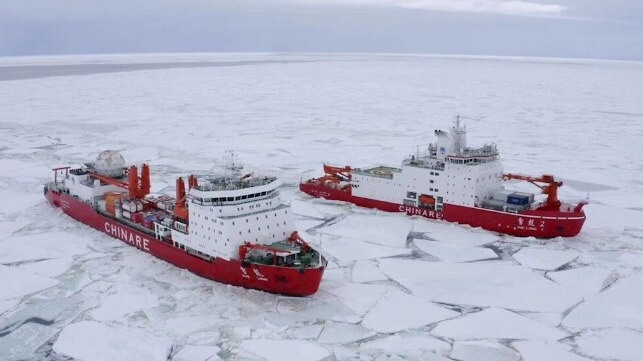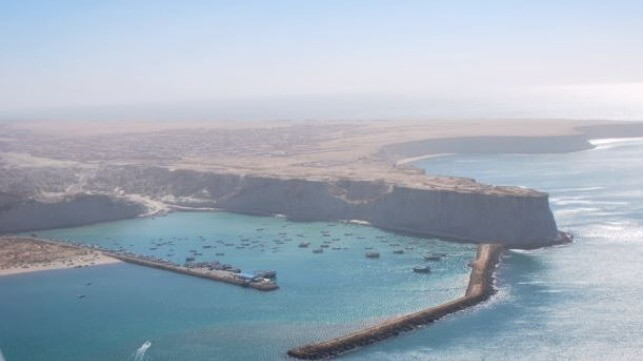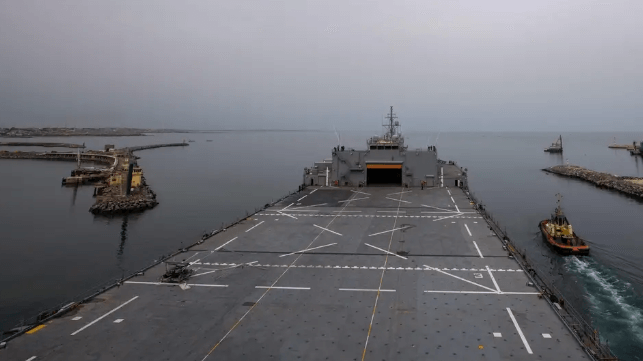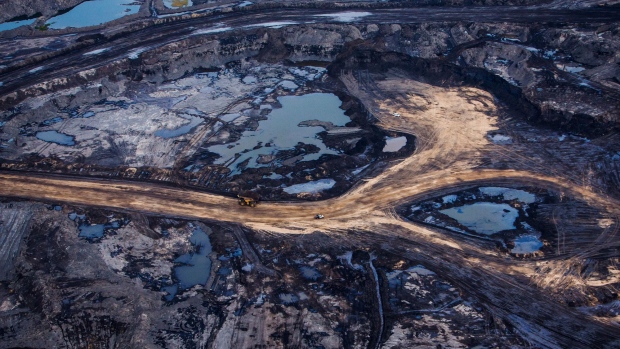China's Arctic Ambitions are Less Grand Than They Appear

Western analysts risk overestimating China’s emergence as an Arctic power, spurred by fears that they initially neglected the reappearance of the Arctic as a theatre for strategic competition. Contrary to such alarmist views, Beijing is in fact far more constrained in the region, mainly because of Russia’s ability to resist encroachment and China’s ability to accept limited resource and transit opportunities there.
In assessing China’s influence over Russia in the Arctic, there is a tendency to portray Russia as little more than a springboard for Chinese interests. In this flawed perception, President Vladimir Putin has invited Beijing into his Arctic larder as a way of buying goodwill for his invasion of Ukraine. But this underestimates Moscow, which assumes its alliance with China will hold without such bargaining. Russia also jealously guards its backyard and signals that regional advances made by China would injure their alignment elsewhere in locations with far greater strategic importance for Beijing.
To this end, Putin has stalled projects that fail to further his strategic agenda or give him a controlling stake. Russian law stipulates that, while private Russian energy firms can develop in the Arctic zone, they may not cede controlling stakes to foreign firms. Furthermore, Russia has not given China privileged use of the North Sea Route or its six major ports—Pevek, Tiksi, Dikson, Sabetta, Arkhangelsk and Murmansk. Chinese ships have either been refused entry or have abided by Russian transit laws that force them to pay tolls, provide ample notice about journeys and accept Russian pilots.
This freezes China’s position below Russia’s in the polar power struggle. And that will be hard to change, given that Russia’s 24,000-kilometre coastline in the Arctic accounts for 53 percent of the total for all countries. Russia also has a lot of skin in the game, with its Arctic territories contributing about 20 percent of its gross domestic product, 10 percent of its total investment and 20 percent of its exports. The Arctic accounts for 80 percent of Russia’s natural gas production and 20 percent of its crude oil production.
The tension between China and Russia in the Arctic lies behind Beijing’s tepid reaction to projects that fulfill Russia’s strategic goals, such as the co-development of the Power of Siberia 2 natural gas pipeline. Moscow, in turn, attempts to balance its relationship with China by diversifying its Arctic partners, encouraging India and the Gulf countries to participate and calling for a science station on Norway’s Svalbard archipelago in cooperation with India and China.
Many Western analysts have failed to accurately calibrate the scale of the Arctic’s economic opportunities, another reason for their overestimation of China’s growing power in the region. They depict the Arctic as providing a shorter shipping route than Suez and a treasure chest of resources, including oil, natural gas, fisheries and critical minerals.
In reality, developing a reliable route to rival the Suez Canal remains implausible due to safety concerns, environmental uncertainties, lack of infrastructure and shortness of the navigation season. Currently, less than 10 percent of global shipping movement is in the Arctic and that looks unlikely to increase in the near term.
The idea that there will be a scramble for the Arctic’s natural resources in which China plays a major part is also overblown. Ostensibly, the opportunities in the region look promising: according to a US Geological Survey, the Arctic holds an estimated 13 percent of the world’s undiscovered conventional oil resources and 30 percent of its undiscovered conventional natural gas resources. But most is in exclusive economic zones. In fact, under the United Nations Convention on the Law of the Sea, six littoral states control roughly 85 percent of the water space, which includes the resources in the seabed. Moreover, Beijing cannot challenge the sovereign rights of Arctic states over maritime jurisdictions without contradicting its own efforts to nationalize the East and South China Seas, where its stakes are much higher.
Finally, a thaw in the Arctic will pose new challenges for China and other nations. The instability of softening terrain will make it difficult to build the infrastructure necessary for extracting resources. The changing landscape may also undermine the role of existing military structures such as roads, runways, naval bases and communications systems. It may even destabilize military strategies, as thinning ice and increased satellite coverage make submarines more exposed.
In sum, China’s potential in the Arctic is limited by Russia’s concerns of rivalry in the sole region where it remains a first-rank power, especially as the power gap between the two countries widens in other fields. Beijing has decided to respect Russia’s sensitivities and prioritize the pursuit of a shared revisionist world order, resulting in an adjustment of its ambitions in the Arctic. Western analysts should take heed or risk wasting resources in the Far North that might be better deployed elsewhere.
Henry Hopwood-Phillips is founder of Daotong Strategy, a Singapore-based political consultancy that specialises in analysing China’s geopolitics.
This article appears courtesy of The Strategist and may be found in its original form here.
The opinions expressed herein are the author's and not necessarily those of The Maritime Executive.






